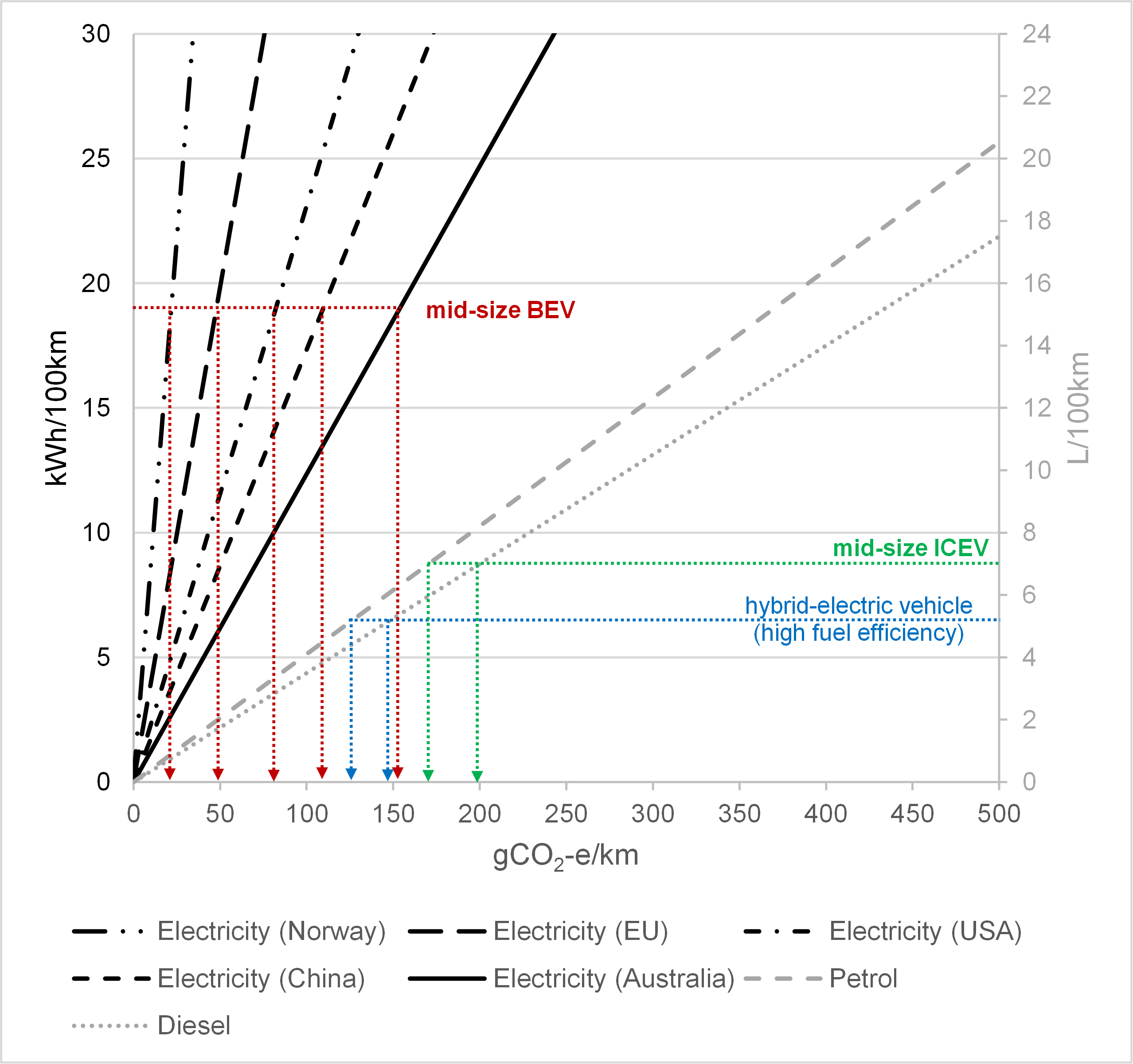Electric vehicle (EV) adoption is increasing in Australia, as it is in many other parts of the world. However, take-up in Australia has been slow due to unfavourable policy settings and lack of EV supply. In addition, EVs that make it to the country have a limited greenhouse gas emissions reduction potential due to Australia’s carbon-intensive electricity mix.
While some jurisdictions have successfully transitioned to generating electricity from predominantly renewable energies, the average Australian electricity mix remains significantly more emission intensive compared to Europe, North America, and China.
Dr Robert Kochhan of ARRB, along with his team of EV experts, have undertaken a study that illustrates the potential of battery electric vehicles (BEVs) to contribute to a reduction of greenhouse gas emission from road transport, which still accounts for approx. 15% of all of Australia greenhouse gas emissions. The diagram below shows a comparison of greenhouse gas emissions for a mid-sized BEV and an internal combustion engine vehicle (ICEV) between Australia and other key regions worldwide. The black lines represent emissions of electricity usage (left y-axis), the grey lines are for fossil fuel usage (right y-axis). BEVs in Australia, represented by the solid black line, are shown to have the highest emissions compared to other developed countries. Other vehicle technologies, such as hybrid-electric vehicles may currently be a less-carbon-intensive solution to replace ICEVs in Australia.
International Comparison of GHG emissions from BEVs and ICEVs

This indicates the possibility of improvement to bring Australia in line with the international community regarding greenhouse gas emissions. However, the outcome of the comparison depends significantly on the location and the comparative energy consumption of the vehicles. Electricity in some states including Tasmania and South Australia is generated largely from renewable energy so that BEVs in these states are the least carbon intensive solution. The use case also needs to be clearly defined, i.e., which vehicles or fleets needs to be compared, and what are their energy consumptions?
In order to accelerate emissions reduction from road transport, positive energy road technologies were also investigated, which enable the generation of electricity from renewable energy sources within the road corridor, i.e., close to where EVs operate. A framework using a set of assessment criteria was developed which helps to evaluate the suitability of positive energy road technologies in Australia. Solar and small wind devices are deemed most suitable and have already been implemented in some jurisdictions. However, the overall energy contribution from positive energy road technologies is limited compared to large scale renewable energy power plants.
In the paper Battery-Electric and Internal Combustion Engine Vehicle Emissions in Australia, Considering Energy Mix and Positive Energy Roads, authored by Robert Kochhan of ARRB, the details of the greenhouse gas emissions reduction potential of EVs and the contribution from positive energy road technologies in Australia is explained.
For more information, contact Robert Kochhan, Senior Professional Leader, ARRB.
